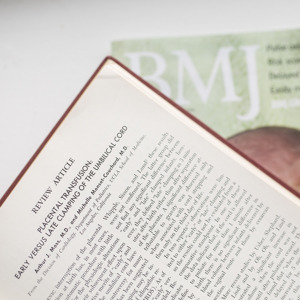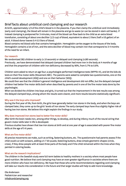2015 > 06
Interested in a comprehensive summary of what we know regarding umbilical cord clamping? Read this piece by Hannah Dahlen, Professor of Midwifery at University of Western Sydney:
Delay clamping babies' umbilical cords for better health and development
She concludes: 'Now that we can add the evidence of longer-term benefits of delayed cord clamping to the growing list of advantages, it’s time to take a stand in Australia and move with the rest of the world in changing entrenched practice. Consumers are demanding delayed cord clamping and health providers need to respond in light of the mounting evidence of benefits to the baby.'
A blog post shared by Lisa-Marie Sasaki Cook, BSN, RNC-OB, C-EFM, ICCE, CD (I don't know what all abbreviations mean) published June 9th has gone viral: Placental Transfusion for Neonatal Resuscitation After a Complete Abruption.
Lisa-Marie writes about how a pregnant woman gave birth to a baby at 28+4 weeks gestation with an abrupted placenta. The baby who was pale and pulseless was brought to the resuscitation table where the NICU team took care of the baby while the phycisian kept the placenta over the baby with the cord unclamped, making an extra transfer of blood to the most likely hypovolemic baby possible. The baby began to cry and turn pink. Lisa-Marie continues:
'This really impacted our hospital and we have since been able to do this in another case. My hope is that you’ll be able to glean wisdom from our experience.'
As knowledge deepens regarding umbilical cord clamping on well-being preterm and term newborns, the concept of waiting to clamp the cord during resuscitation is still in an exploring and pioneering phase. Sharing one's experiences are an important step to help us learn more.
One thing is to believe something is right, proving it is a something else. Regarding if and when to clamp the umbilical cord, a lot of people feels it's common sense and 'natural' to wait.
Our research as well as others in the field, is aimed to find out the advantages and disadvantages with delayed versus early cord clamping, hopefully in the end being able to clarify the optimal timing.
Not many things are completely advantageous or disadvantageous.
In June 5th, a Keith Barrington reported his attempt to summarize the research on preterms and placental transfusion. Although, evidence in no way discourages from waiting to clamp the cord, it's evident that we need at least one more large trial to show conclusive results. The APTS trial is aiming to help us to gain that knowledge.
Practice not based on solid evidence will always be threatened to be discarded, and one could only have wished that research had been as rigorous when cords started to be cut early as it is now.
If you are interested in umbilical cord clamping and the results we have shown in our research, the best thing is of course to read our articles. If you want a short summary, you can read the fact sheet that summarizes our findings. It is also available in Swedish.
Another option is to watch this video clip on Youtube
Why do delayed umbilical cord clamping improve fine motor function at four years of age? Dr Ola Andersson, one of the authors of the study explains. The article published in JAMA Pediatrics is found here: http://archpedi.jamanetwork.com/article.aspx?doi=10.1001/jamapediatrics.2015.0358
LATEST POSTS
- Three Reasons To Wait To Clamp The Umbilical Cord
- Midwives in Sweden tends to clamp the umbilical cord in a way that is more natural and practical in…
- New uptodate review on cord clamping
- In memory of Hans Rosling:
- 3 reasons for clamping the umbilical cord after 3 minutes
- 30 seconds might be enough when delaying cord clamping at cesarean sections
- This years christmas gift to all babies
- Major break-through for delayed cord clamping
- 10 years today since this important paper was published
- Podcast about delayed cord clamping.
 0 comments
0 comments 






Israel Brown » Major break-through for delayed cord clamping: ”It is worth taking such a recommendation . However, cord milking in both preterm..”
Dr Robyn Thompson » Major break-through for delayed cord clamping: ”Midwives with women have not been practising early cord clamping for decades tha..”
Sally » Major break-through for delayed cord clamping: ”What's the number of babies needing photo therapy for term babies., talk about i..”
Tonia » Major break-through for delayed cord clamping: ”The picture in this article shows a placenta several minutes after delivery. The..”
Steve Kabamba » Major break-through for delayed cord clamping: ”What is the stand in the High burden HIV population? What is the risk of contrac..”